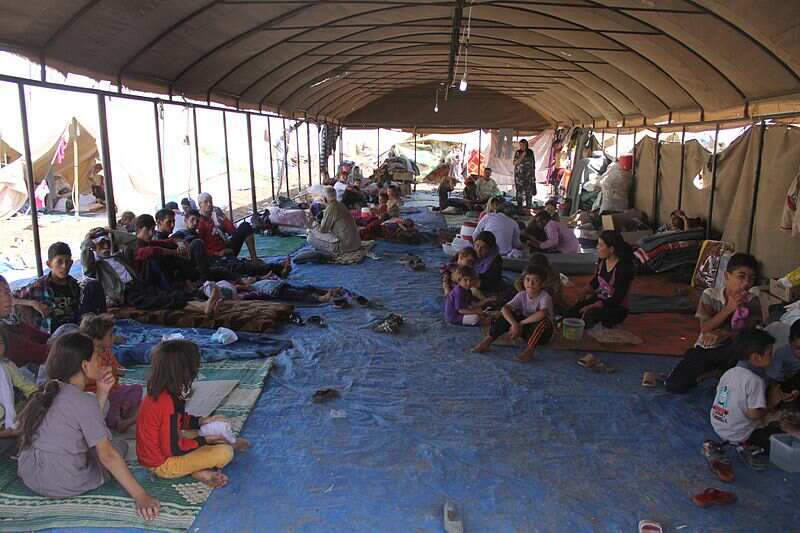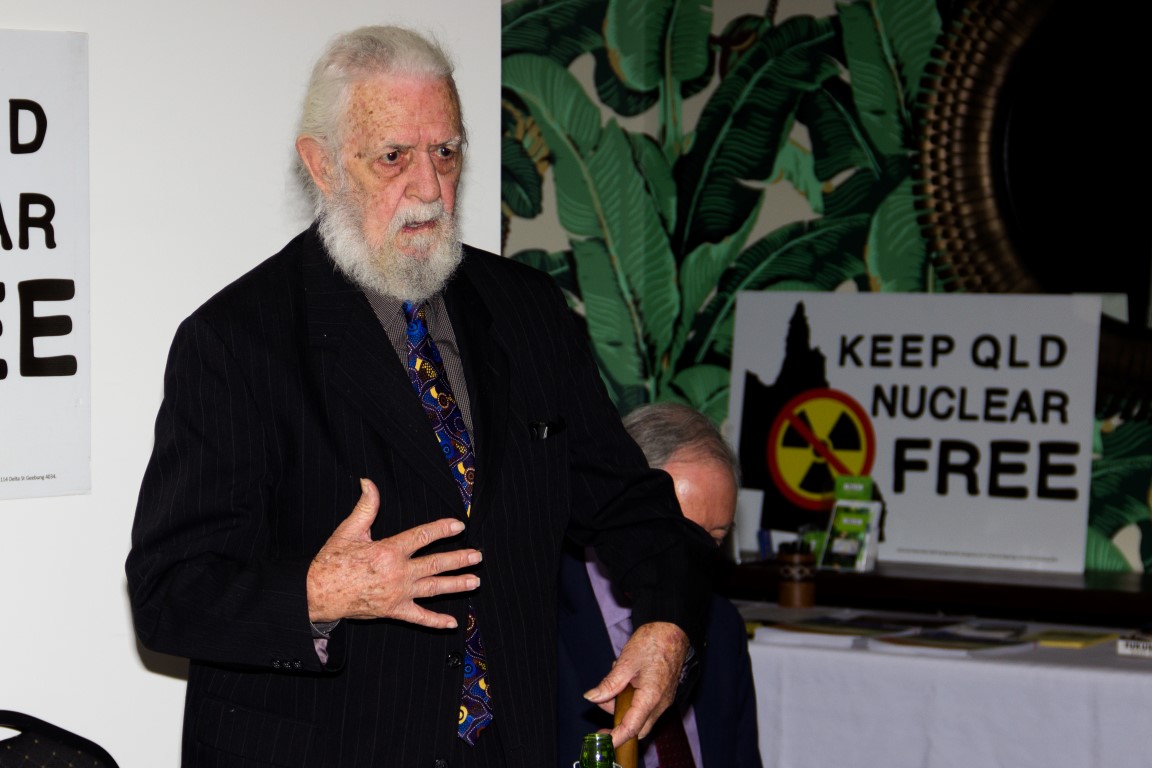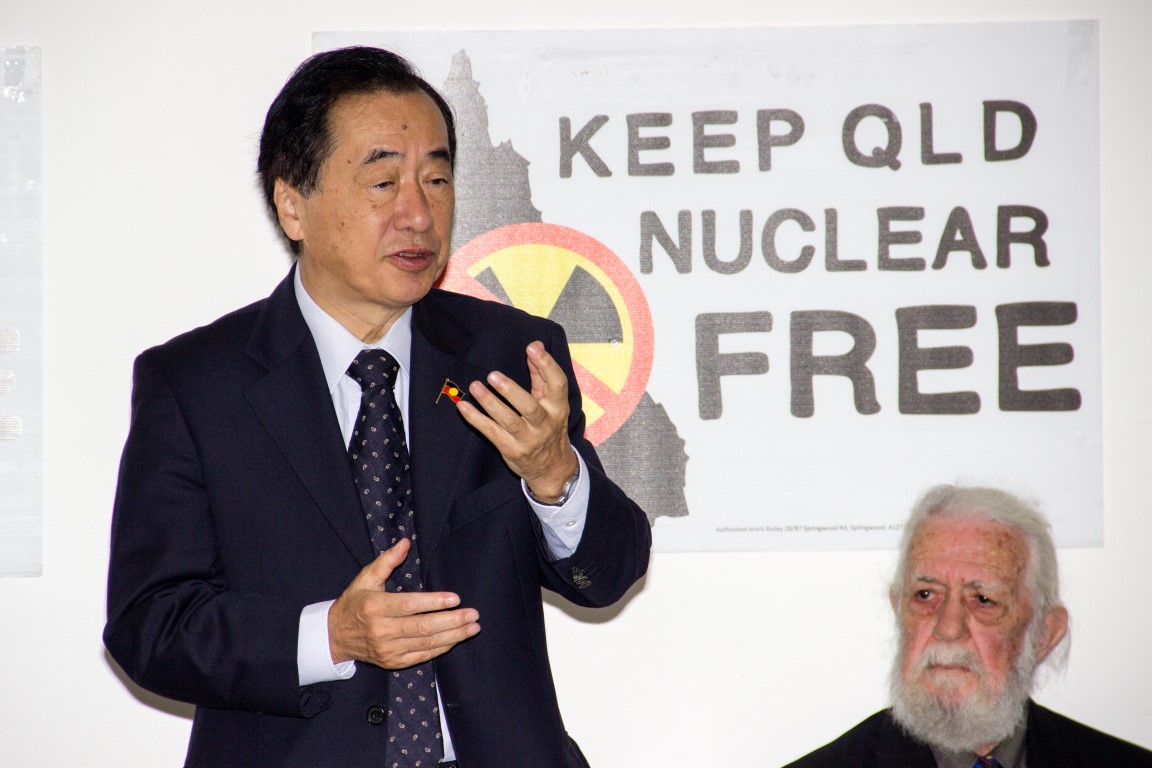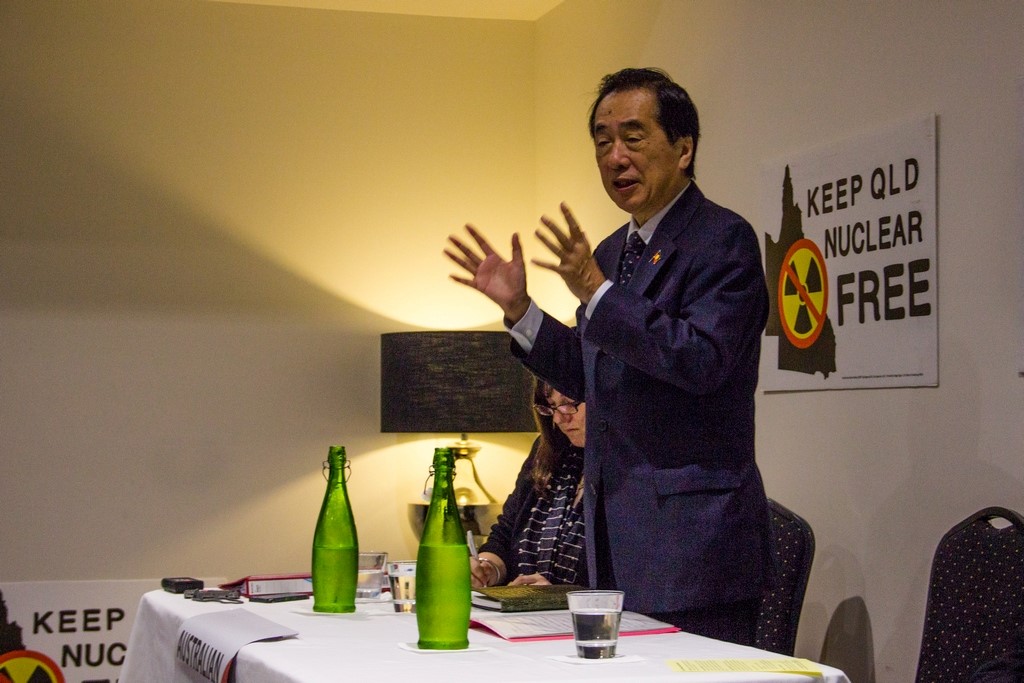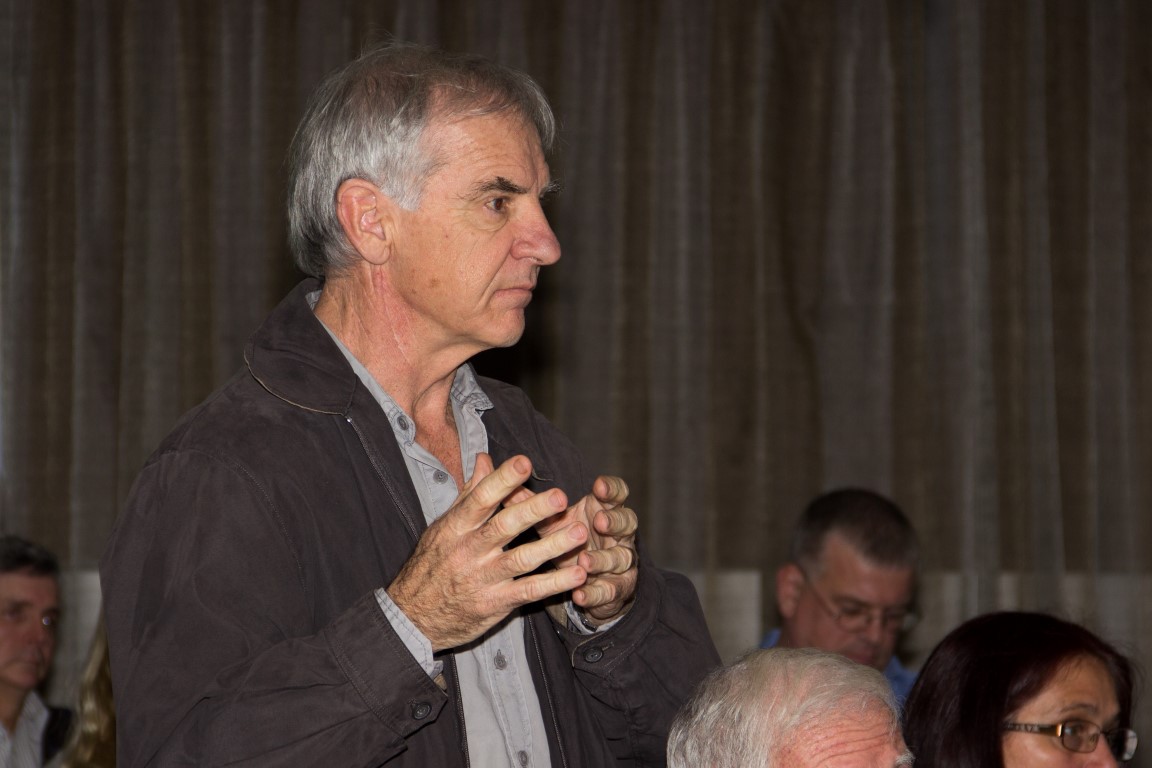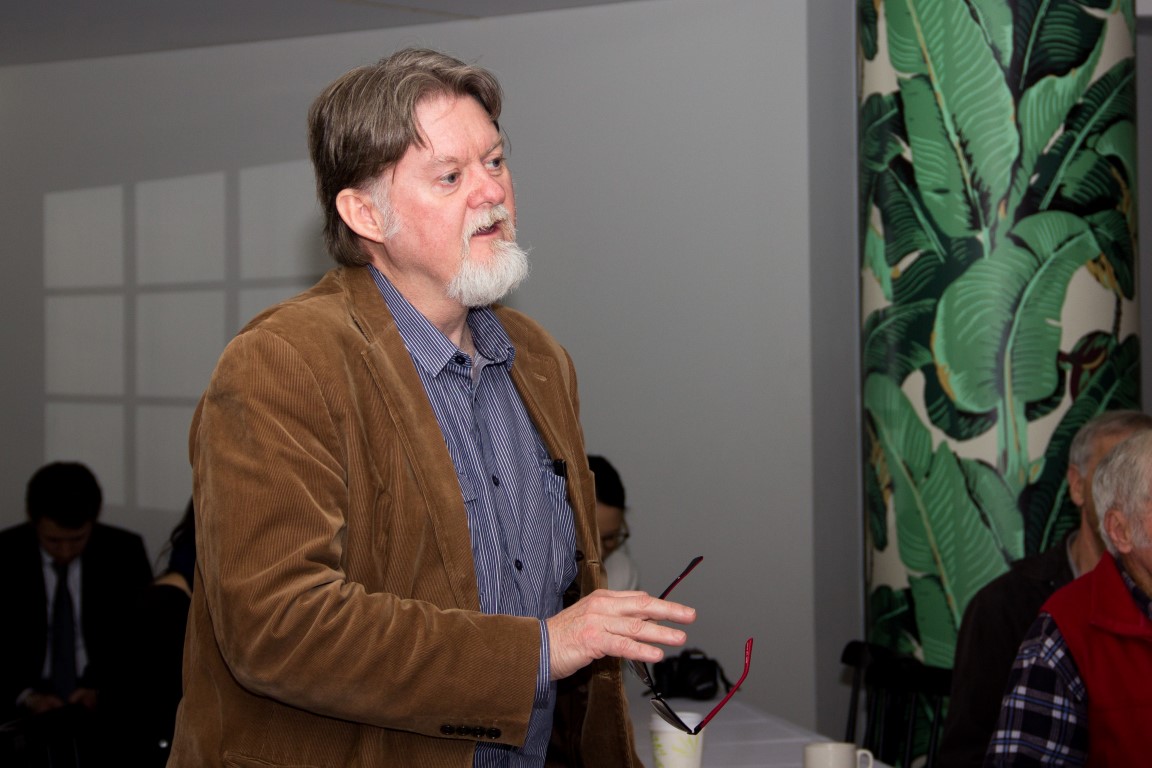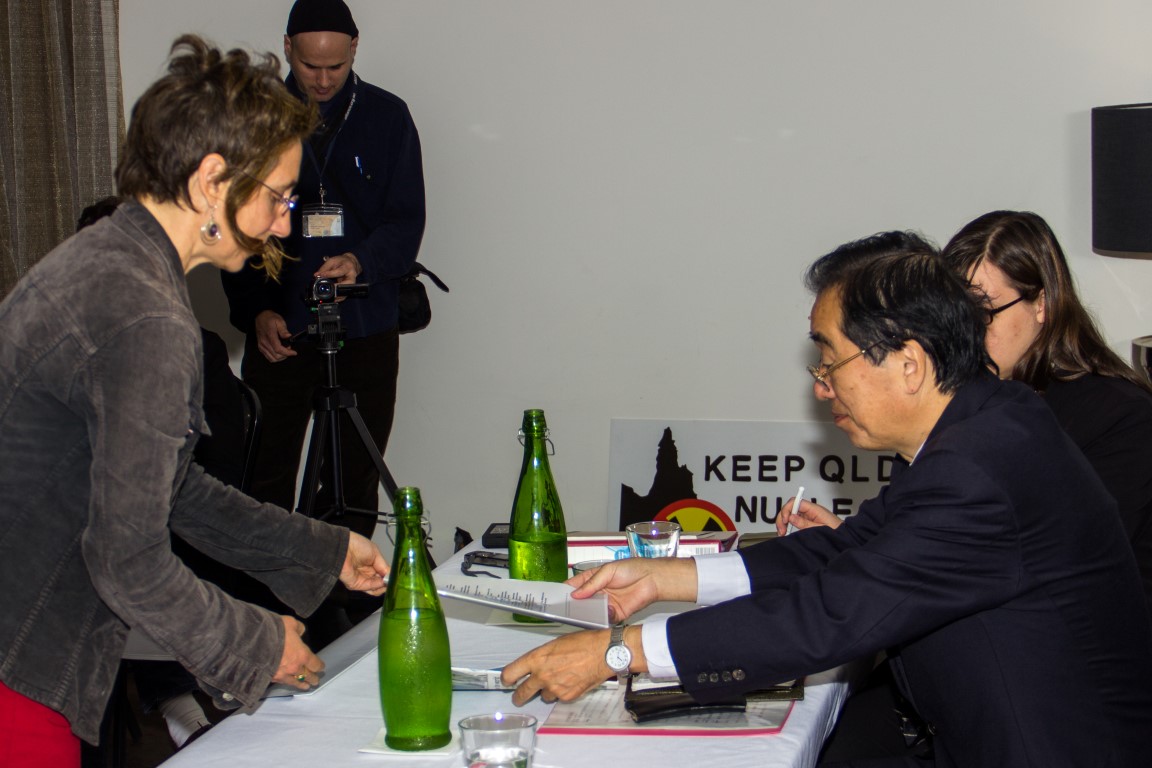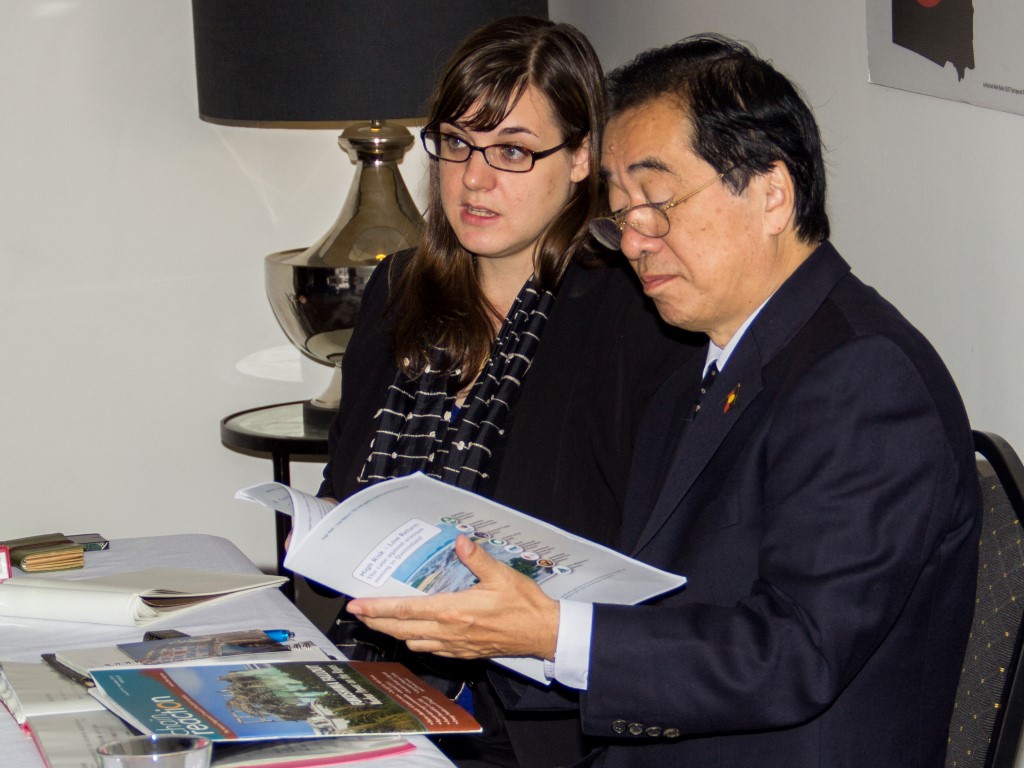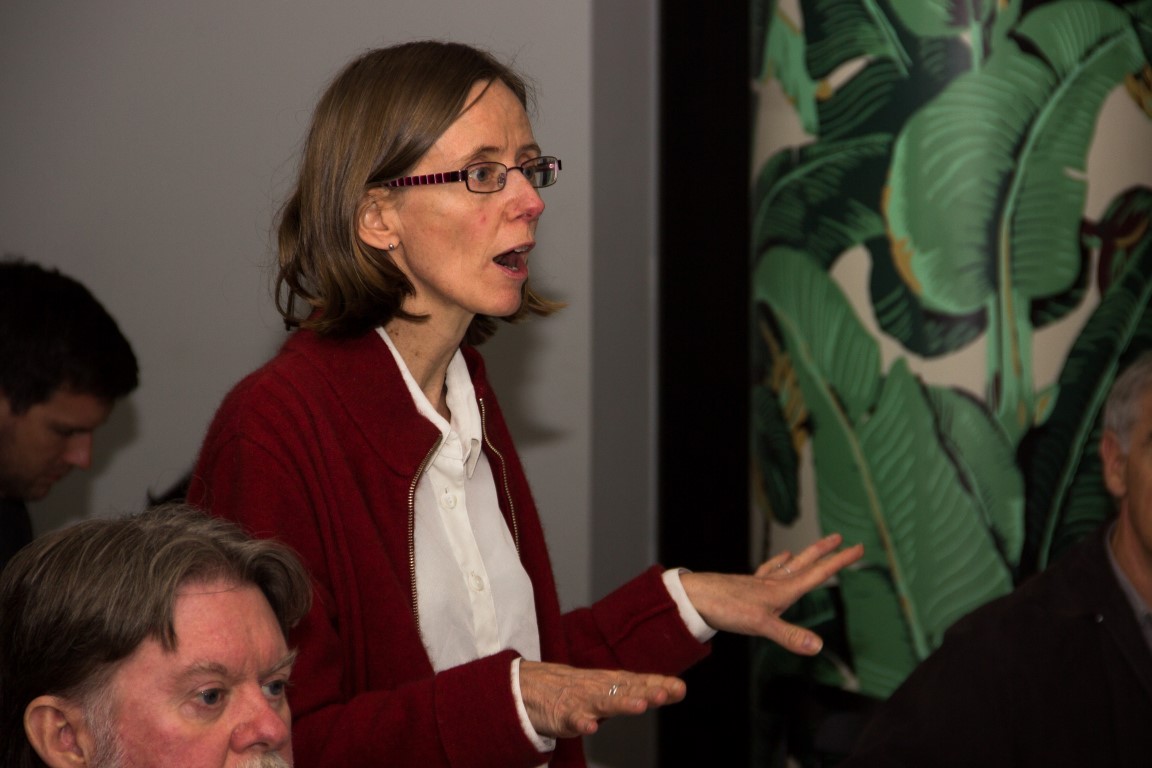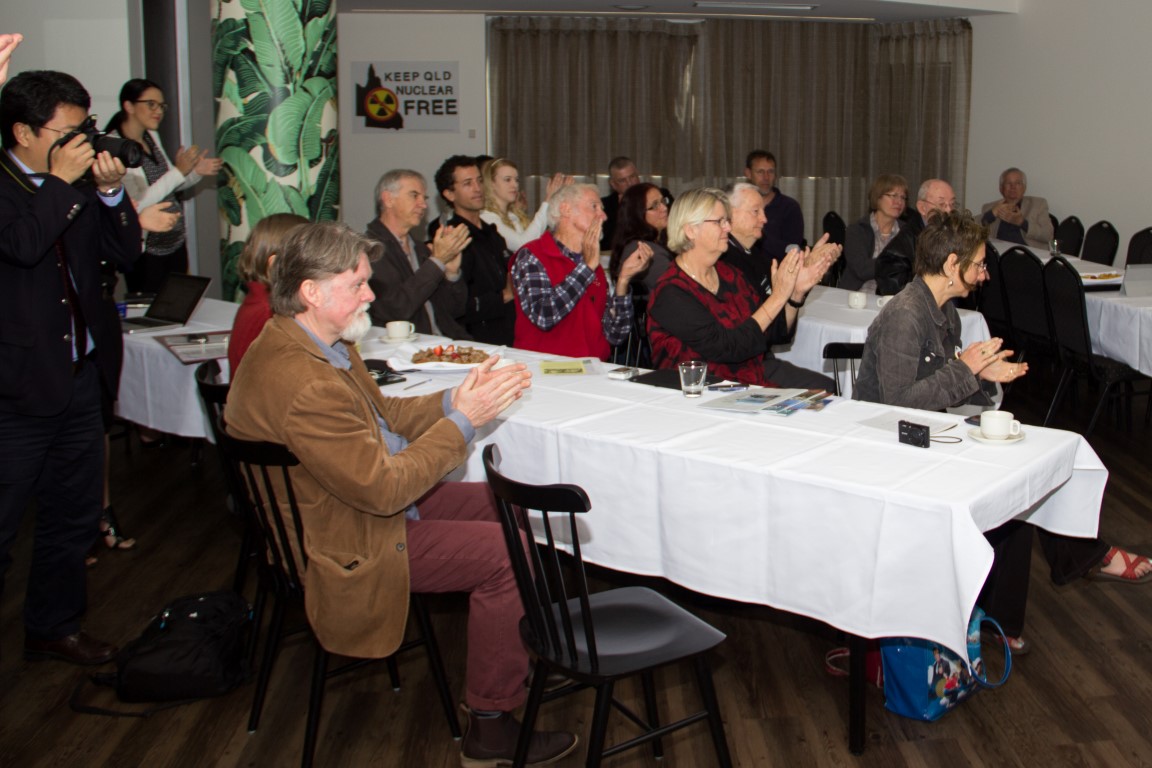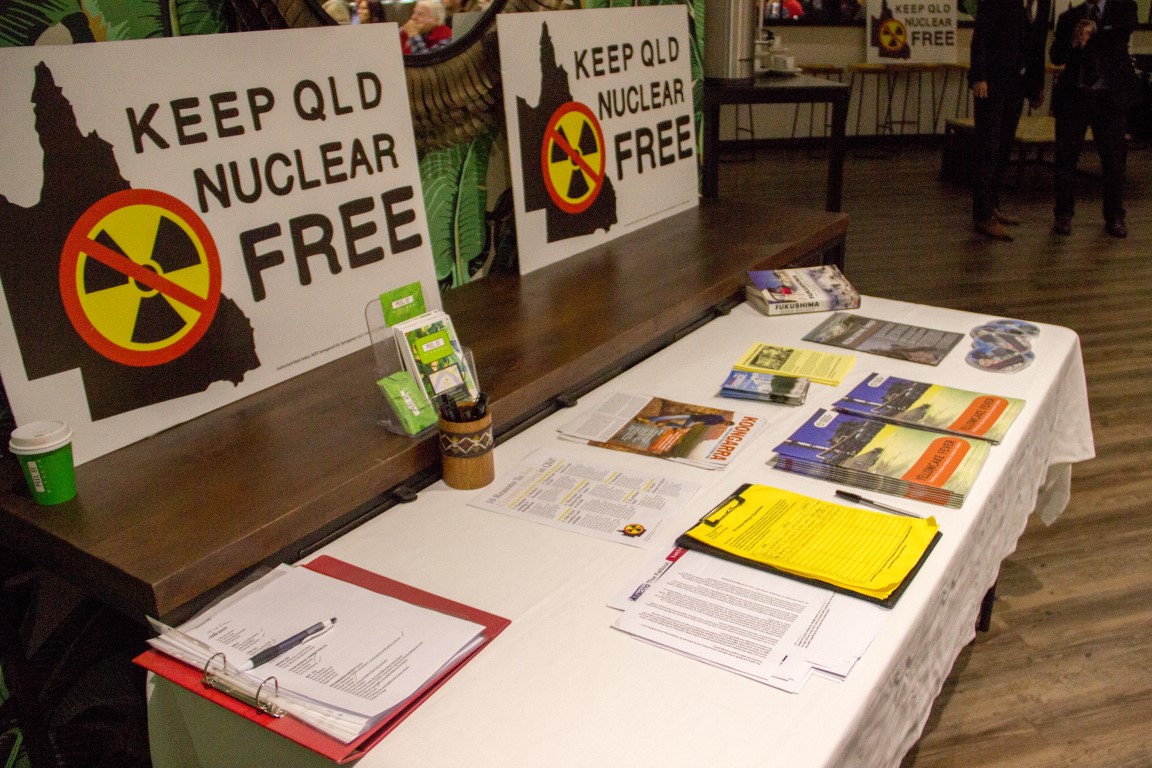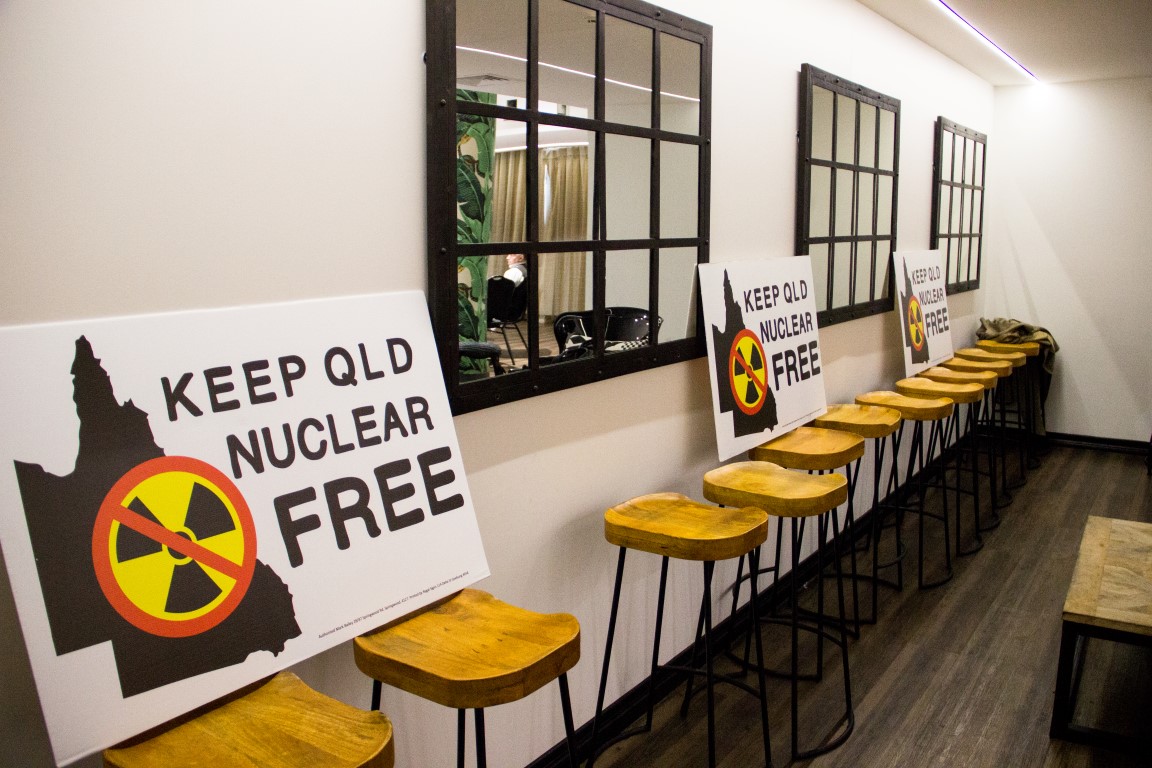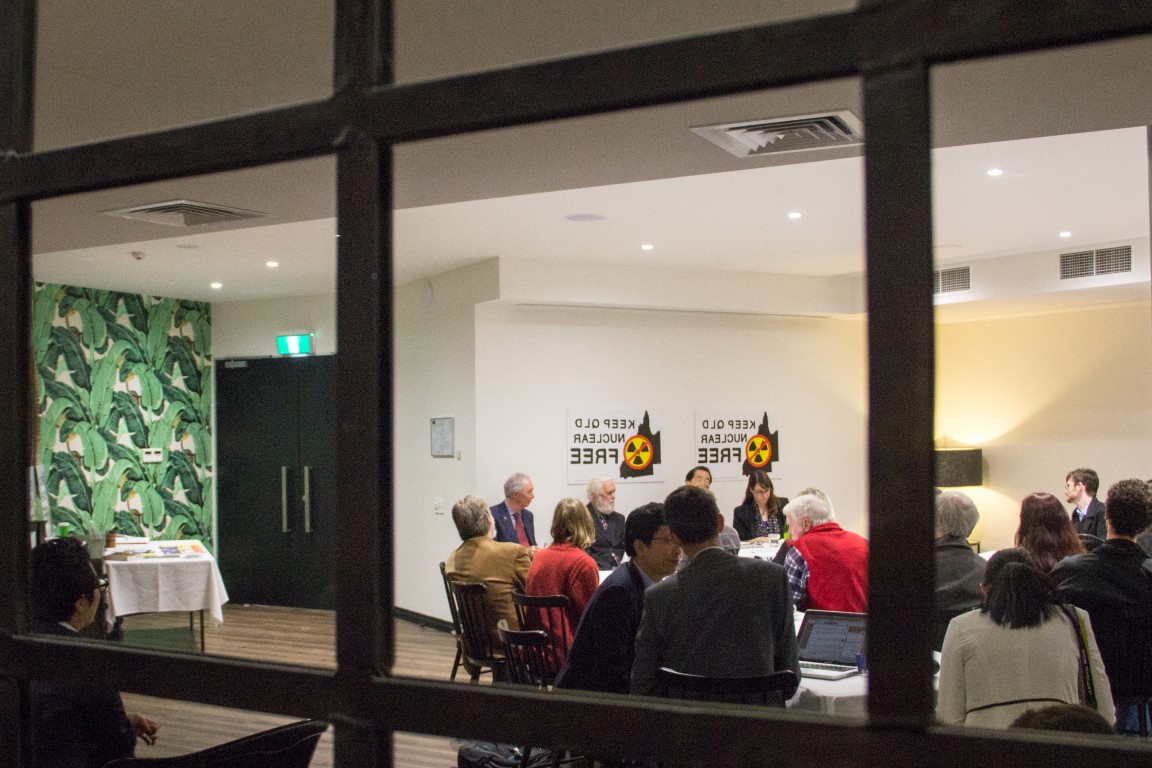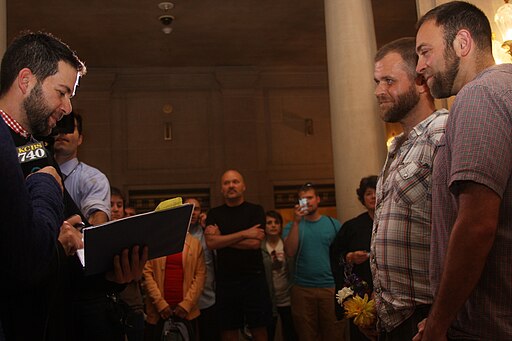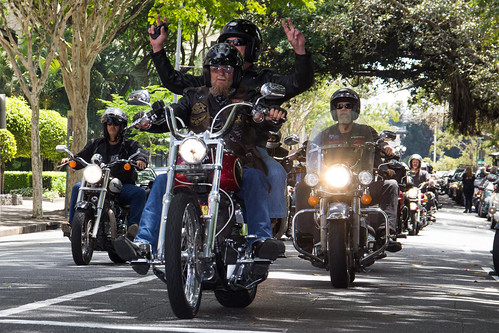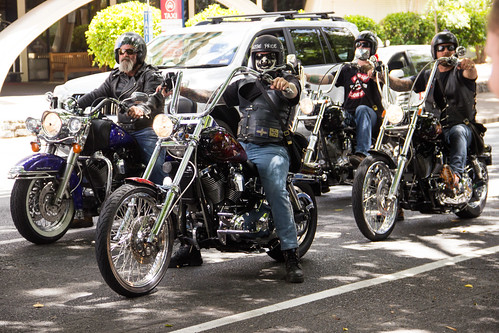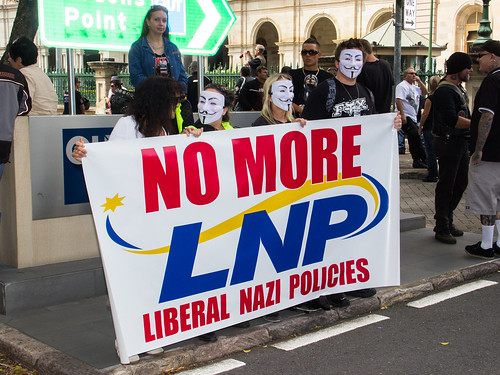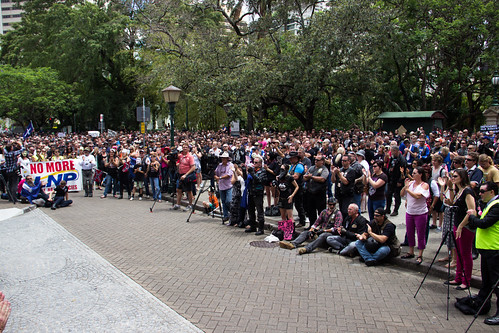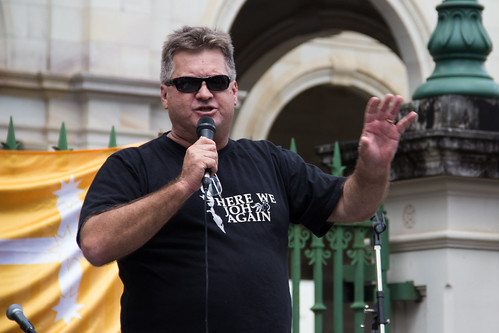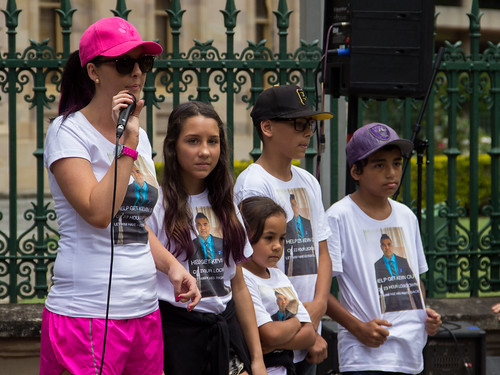![Photographer: Jonny White (G20 April 1st) [CC-BY-2.0 (http://creativecommons.org/licenses/by/2.0)], via Wikimedia Commons](http://briscan.net.au/wp-content/uploads/2014/10/G20_capitalism_banner-300x200.jpg)
London G20 2009
Economic
G20 Solutions tend to focus on financial growth and security, figuring that if banks are sound then business can be funded and everything keeps rolling along happily. So money is poured into the financial sector in the form of stimulus payments. The second solution G20 focus on is removing impediments to big business, in particular global companies. For this, trade agreements and other mechanisms are used to “level the playing field”.
The problem with these solutions is they are predicated on the idea that if you look after the big end of town, wealth will trickle down to the rest of us. The problem is, this “trickle down” effect does not occur. It seems that what happens is that wages, conditions, and goods and services all level out to the lowest common denominator while the “big end of town” continues to get bigger.
In June, Oxfam Australia’s chief executive Helen Szoke said ”The Australia figures are quite staggering if you think that nine individuals have a net worth that is equivalent to the total 4.5 million people, or the bottom 20 cent of income workers – that’s pretty stark.” Her source was a Forbes and Credit Suisse Global Wealth Databook study.
One of the reasons for the increasing gap between the rich and the poor is regressive tax rates. In the US in 1970 the income tax rate over $100,000 dollars was 70%. Now it’s 39.6% for income over $225,000. Another is the holding down of incomes since the GFC, which have lost value in real terms while the profits of the multinationals and the bankers have gone up. Source, the federal reserves own 2013 Survey of Consumer Finances.
Indeed even when the G20 make sounds as if to recognise these issues, nothing happens. In 2011, at the request of the G20 The Gates Foundation produced a report entitled G20 Report that recommended a financial transaction tax as a way to stem the flow of wealth from the poor to the rich. The tax came to be known as the Robin Hood Tax. The recommendation was not adopted.
It is not only personal income that contributes to the gap between the rich and poor. Company profits are often able to escape taxation altogether, or be greatly minimised. Again, the G20 recognised the need to address this issue, and called for the Base Erosion and Profit Shifting plan to address corruption and tax evasion. The request was picked up and a plan developed by the OECD (see here: BEPS). But as yet, G20 nations have failed to endorse the plan. The Tax Justice Network have conducted ground breaking research into global tax evasion, revealing that 21 Trillion dollars (the entire GDP of the US is only $16 Trillion) is siphoned offshore before governments have a chance to tax it. Many of the nations who host this offshore profit, have massive debts that cripple their ability to provide infrastructure and services to their people, yet their total debt is LESS than the offshore profits they are hosting. But it’s not dodgy no name banks who are holding the profits on behalf of western corporations: it is the very international banks of the G20. And these banks are paying off the corrupt leadership of these debt ridden nations, or paying the public purse a pittance and threatening to go elsewhere if the host nation dares to tax them.
Even the IMF has criticised the lack of action on tax havens, as shown by the Tax Justice Network in the report IMF: tax havens cause poverty, particularly in developing countries:
The IMF report takes a swing or two at the OECD’s BEPS process. For instance, in a section on tax treaties which allocate taxing rights among countries, the IMF notes that not only are the OECD models (that are generally the basis for these treaties) skewed in favour of richer countries, as we and other have often remarked, but it also adds:
“At issue here are deeper notions as to the ‘fair’ international allocation of tax revenue and powers across countries (which current initiatives do not address).”
Which makes it all the more perplexing that the G20 nations have failed to endorse BEPS.
The G20 have recognised that the shift of wealth upwards is a threat to global economic growth. In 2009, the G20 adopted the ‘G20 Framework for Strong, Sustainable, and Balanced Growth’ in which it required it’s members to “promote balanced and sustainable economic development in order to narrow development imbalances and reduce poverty”. Yet they seem so beholden to the business lobby that they have forgotten this framework.
Climate
If we turn to climate we find a similar scenario. At the 2010 G20 Summit in Soul the closing document expressed a commitment to “achieving a successful, balanced result that includes the core issues of mitigation,transparency, finance, technology, adaptation, and forest preservation”. Yet the G20 have achieved almost nothing on these fronts. The G20 have failed to provide effective leadership in developing effective world wide carbon reduction policy. In energy production, the G20 have failed to implement removal of fossil fuel subsidies despite reiteration of the need to do so at many of the G20 summits. In an age where governments are asking their people, through mechanisms such as the proposed Trans Pacific Partnership Agreement, to accept removal of barriers to trade such as local environmental laws, animal cruelty laws, food safety laws etc, they are then asking their people to accept fuel subsidies that favour the big emitters. $528 billion world wide goes towards fossil fuels while $88 billion goes towards renewable energy. On a proportional basis, per unit of energy, more subsidies go towards renewable energies, which on the surface makes it appear that renewable energy producers are better off. however if this figure was reversed the uptake of renewable energies would occur much quicker and there would be a brake on fossil fuel use. The benefit in carbon reduction would be immediate. Of course on the end of this is a consumer of fuel paying more to get from A to B. But the solution is not to bring everything down to the lowest common denominator. Nor is it to heat the world’s climate in the process, because doing so will only cost the average person on the street more in the long run, while, under current G20 economic models, the captains of industry will continue to do better and better.
Representation
In a very real way this highlights the flaw in the whole modus operandi of the G20 and their neoliberal theories. That the G20 are not working effectively towards lifting up the world’s populace economically, so that they can afford to make a real choice between using fossil fuels or an equally priced (and heavily subsidised – at first) renewable energy alternative, is a basic failure of democracy.
The G20 leaders are not listening to the people. After the G20 summit, with all it’s feel good statements about climate, the worlds poor and so on, they go back home to their economic rationalist advisors and their lobby money and fail to act. The G20 is a Festival of Fakery. The only real things that come out of the G20 are “back room” agreements that centre around access to resources. “We’ll open this market if you open that market”. The talk of caring for the environment, building alternative energy solutions, equality and eliminating poverty is all forgotten when the talk gets down to the nitty gritty.
Not only is the G20 failing on democracy for it’s member nations people: it doesn’t represent all the people of the world. The G20 nations cover 70% of the world’s people, and 90% of it’s wealth. The last 30% with only 10% of the wealth are not represented in any meaningful way in the G20 discussions. All South American nations excepting Brazil and Argentina, most of Africa and South East Asia are not represented.
First Nations
The people of the world’s first nations are particularly under represented by the G20, primarily because their nations have been decimated by colonialism. Indeed they are more often not even recognised as having sovereignty and it is expected that representation is covered by the nation under which they have been colonised. What is not understood is that until sovereignty is recognised, first nations people are without land and without purpose. They are adrift within the imperialist’s world.
Where sovereignty is recognised through appropriate treaties, first nations people are able to rebuild their unique culture, laws and language. First nations people usually have very different economic models compared to the G20 member states. They have closer affinity with the land and when it is destroyed by mining or environmental degradation the connection to their culture is in danger of being lost.
The economic and cultural needs of first nations people around the world are not covered by the G20. At most you can expect token participation. Before first nations people can have true justice the world needs to divest itself of colonialism: it has to decolonise. First Nation sovereignty needs to be recognised. Anything less amounts to assimilation, and assimilation is genocide.
So Where To From Here?
It’s fairly clear that the G20 process is not going to lead to a fairer cleaner safer world. Even alternatives such as BRICS (Brazil Russia India China and South Africa) really only seek to provide the same economic rationalist approach in a way that more closely suits that particular subset of G20 nations. What is needed is for the world’s people to first become aware, and second, stand up to the G20 process and say “not in my name”. Like the Indignado movement in Spain, the Arab Spring, the Occupy Movement and now the Hong Kong democracy movement, there needs to be mobilisation against the economic rationalism that is leading to the destruction of our planet and the economic slavery of billions. We need to break down the current paradigm that says “growth is good” and establish a global community that seeks to represent all peoples, to put people before profit, and to work towards and for Sovereignty, Society and Sustainability.
The story of how this is done is will be written by history. But it starts with YOU!
References:
http://www.gatesfoundation.org/What-We-Do/Global-Policy/G20-Report
http://www.oecd.org/ctp/beps.htm
http://www.taxjustice.net/2014/01/17/price-offshore-revisited/
http://www.taxjustice.net/cms/upload/pdf/The_Price_of_Offshore_Revisited_Key_Issues_120722.pdf
http://www.theguardian.com/business/2012/jul/21/offshore-wealth-global-economy-tax-havens

![Photographer: Jonny White (G20 April 1st) [CC-BY-2.0 (http://creativecommons.org/licenses/by/2.0)], via Wikimedia Commons](http://briscan.net.au/wp-content/uploads/2014/10/G20_capitalism_banner-300x200.jpg)
